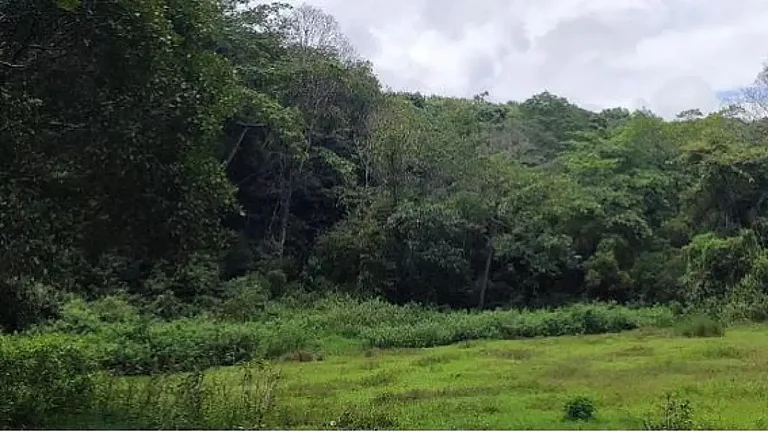
The Himalayas are being developed using a model suited to the plains, leading to ecological instability and frequent disasters.
Hydropower projects in the region are not just harmful to the environment but also economically unsound due to recurring damage from natural calamities.
Unchecked tourism, especially religious tourism, is worsening the situation and needs strict regulation.
Existing environmental laws lack proper enforcement and community involvement, making them ineffective.
In the face of rising flash floods and landslides in ecologically sensitive areas like Uttarakhand, why is there a continued push for infrastructure expansion and hydropower projects? What will be the irreversible long-term consequences of this model of development?
Infrastructure development is necessary, but it must be compatible with the geology and ecology of the region. Infrastructure in the hills must be constructed differently than in the plains. The Himalayas are the youngest mountain system. Unlike the Aravallis, which are solid rock, the Himalayas are a mix of mud and rock and are inherently unstable. For example, a six-lane highway should not be built in the Himalayas because it destabilizes the slope. That is why we see so many road cave-ins here.
Mudslides and rockslides have always occurred in Uttarakhand, Himachal Pradesh, and other parts of the Himalayas. But now, two factors are worsening the situation. First, the intensity of extreme rainfall is increasing due to climate change. Second, we are cutting slopes, making them unstable, and constructing heavy infrastructure like multi-storey buildings, whose weight the bedrock cannot sustain. Traditionally, houses in the Himalayas were designed to exert less stress on the ground—they were either single-storey or built with stone and wood. The bottom line is that we need buildings in the Himalayas, but not multi-storey concrete and steel ones. We need roads and bridges, but not six-lane or four-lane highways that destabilize slopes.
Today in India, the only definition of being “developed” is having wide roads, five-star hotels, or a large number of tourists. The growth model of the plains is being replicated in the Himalayas. This is the fundamental problem—it is simply unsustainable. It must change if we want to avoid the kind of disasters we are now experiencing every year.
The impacts of the current model of development are immediate. Every year, the economic loss and the loss of human life and infrastructure in the Himalayas are enormous. If a state’s GDP loss due to destruction from disasters is almost equal to its growth, there is no real growth. Himachal Pradesh and Uttarakhand are already suffering unsustainable damage from extreme rainfall, landslides, cloudbursts, and other calamities. In the long term, it will only get worse.
The number of hotels and resorts on riverbanks is increasing, often violating natural and legal boundaries. How do such ecologically destructive projects continue to receive environmental clearances?
Dharali is already an eco-sensitive zone—it is part of the Bhagirathi Eco-Sensitive Zone, declared more than a decade ago. Anyone who has travelled to Gangotri knows Dharali has become a tourist hotspot. You can stay in multi-storey hotels there.
The government has established a monitoring committee for the Eco-Sensitive Zone, and there is a process to obtain permission for construction. But clearly, the regulations are not working. If these regulations were implemented properly, there is no reason so many buildings should have been allowed close to the riverbanks or on the floodplain.
With over 100 operational or under-construction hydropower projects in Uttarakhand, many concentrated within the narrow valleys of Bhagirathi and Alaknanda, are we pushing the region’s ecological limits too far?
Absolutely. Uttarakhand currently has 39 large and small hydroelectric projects with a capacity of about 3,600 MW. Another 25 are under construction, with a capacity of about 2,400 MW. In a few years, the state will have 64 hydroelectric projects. There are 180 more in the pipeline, with a combined capacity of over 20,000 MW. The total could exceed 250 projects in the future, which is unsustainable and will have a severe ecological impact.
We have already seen what one project can do—the Tapovan Vishnugad project, which began 17–18 years ago, had a massive negative impact on the geology of Joshimath. Moreover, many of these projects are being destroyed by extreme rainfall, mudslides, and glacial lake outburst floods. Leaving ecology aside, if dams are being repeatedly destroyed by natural disasters, it is not even economically sound. We need to start questioning the economic rationale of these projects.
After the 2013 Kedarnath disaster and the Chamoli incident, we had a rare opportunity to reconsider our approach. What have we learned so far? Are we learning anything at all?
Disasters are now occurring every year. Last year, the Himachal Chief Minister said the damage caused by disasters was equivalent to the entire state budget. Disasters are increasing in both frequency and intensity. I think people are beginning to realise we are in grave danger. When entire villages are destroyed, we should be forced to think.
Dharali is not a new village. It is an ancient one—a gateway to Gangotri. Yet in just a 20-second flash flood, a major part of the village was destroyed. Unfortunately, I do not see strong efforts to address the root causes.
The economies of states like Uttarakhand heavily depend on tourism. But is it time to accept that unchecked tourism is a driver of destruction?
This is not just about tourism. We need to rethink the entire economic model of ecologically sensitive areas. Yes, tourism must be regulated. We can control tourist numbers through carrying capacity studies. There are established methodologies to assess this and set limits. Instead of promoting mass tourism, we can consider high-value, low-impact tourism, as Bhutan does. Globally, there is now a movement against over-tourism. It is only a matter of time before something similar emerges in India, especially in the Himalayas.
We will have to control tourist numbers, especially for religious tourism. It is a sensitive topic and could become politically controversial, but it needs to be addressed. With a population of 1.4 billion, if everyone starts going to Char Dham, there will be no Char Dham left.
Secondly, the economic growth model of the Himalayas must change. The Himalayas are forested, they are the source of water, and they have unique biodiversity and high-value agriculture. We must build the economy based on these strengths. The Himalayan economy must be built on biodiversity conservation, water and glacier protection, high-value tourism and organic horticulture and agriculture.
The Bhagirathi Eco-Sensitive Zone was created precisely to prevent this kind of disaster. Yet violations and exemptions are increasing. Is the problem with the design of such laws, or with their enforcement? What would an effective eco-sensitive zone regime look like?
There is a problem in both design and implementation. A law that looks good on paper but cannot be enforced is of no use. We either make strict laws and then dilute them, or make weak laws from the beginning. The Bhagirathi ESZ regulation is a classic example of an ineffective law.
If we do not want someone to build a multi-storey hotel in Dharali, two things must happen: first, a consensus must be built within the community; second, they must be provided with alternative economic opportunities. An ESZ regulation must be rooted in local consensus and economic alternatives. Otherwise, it will not work.
We have seen the same pattern repeatedly: a disaster occurs, inquiries are made, recommendations are submitted, and then it is back to business as usual. What institutional mechanism could break this cycle and ensure post-disaster findings are implemented?
Instead of always relying on the central government, Himalayan states must build their own capacity to act. Local institutions—state governments, local governments, NGOs and academic institutions—must lead. Of course, support from the central government is important, but the primary leadership and accountability must lie with local governments and civil society.






























